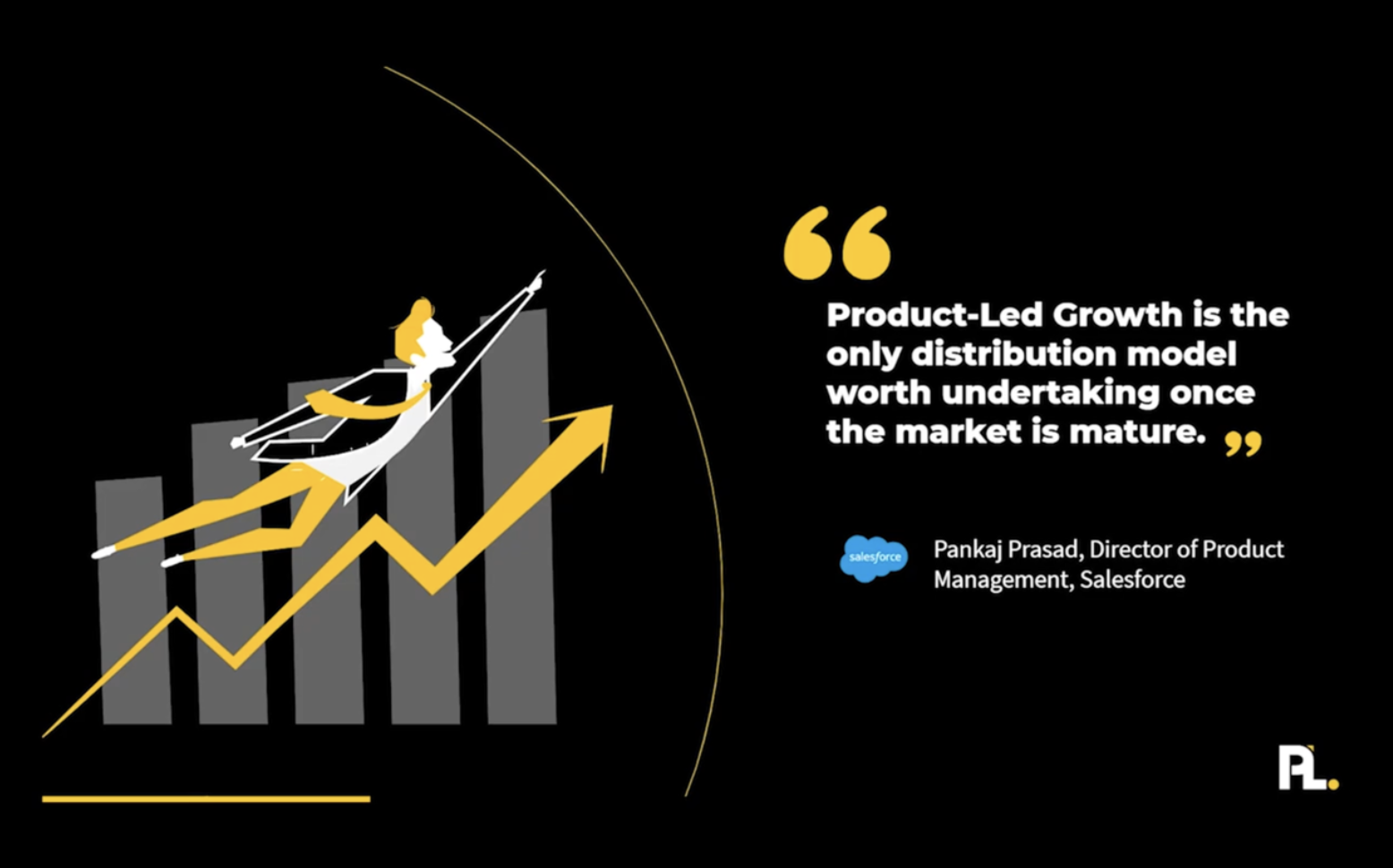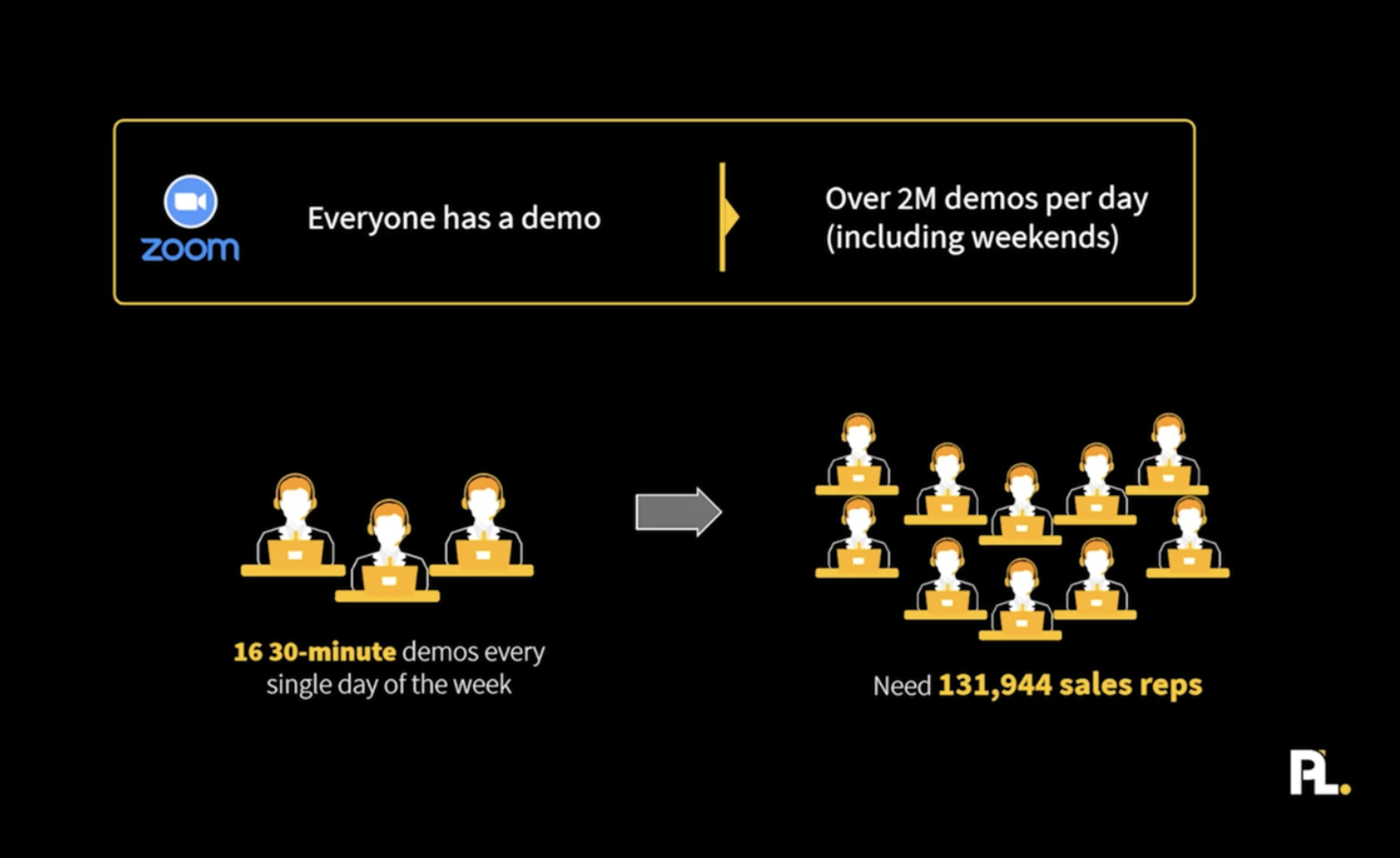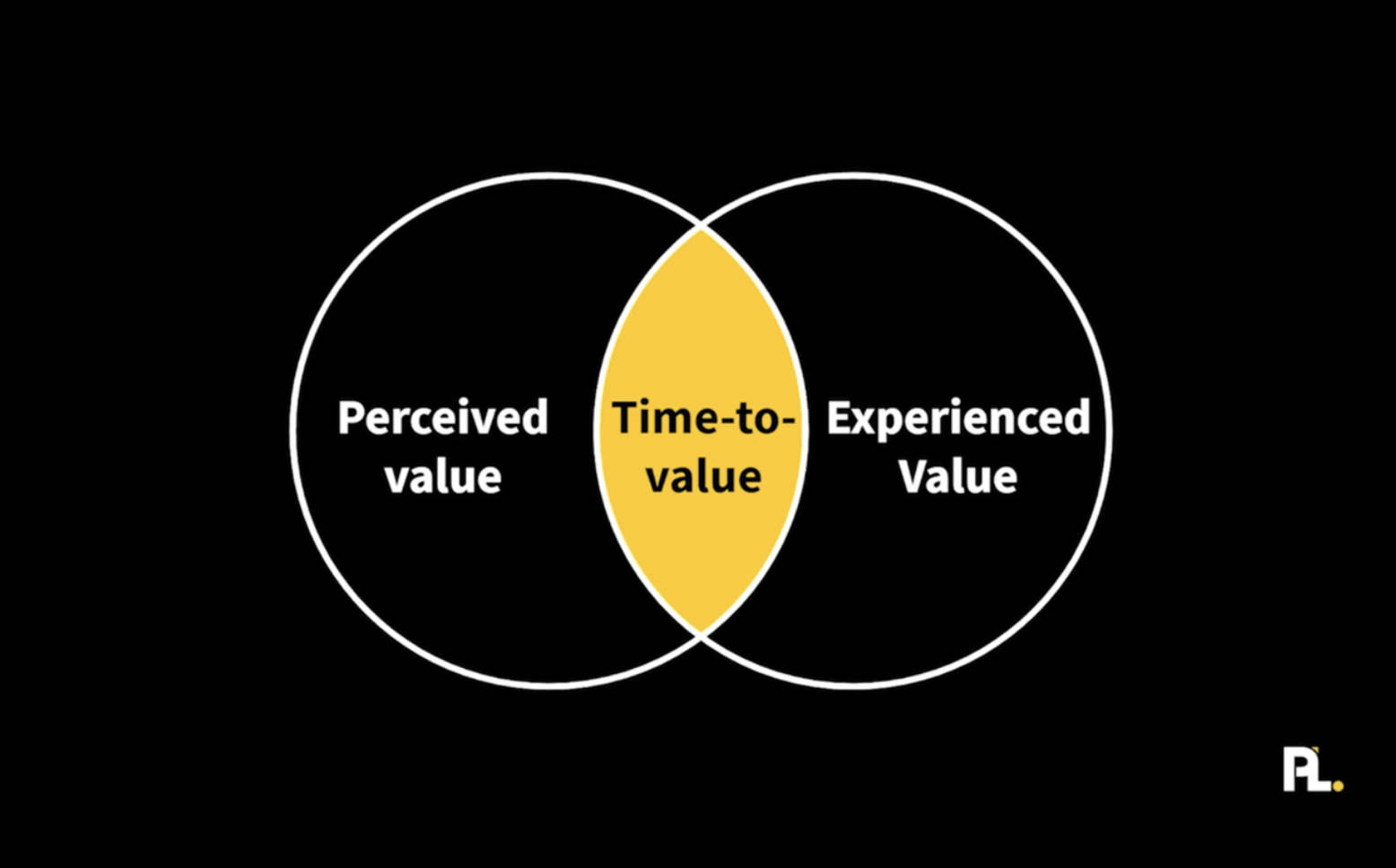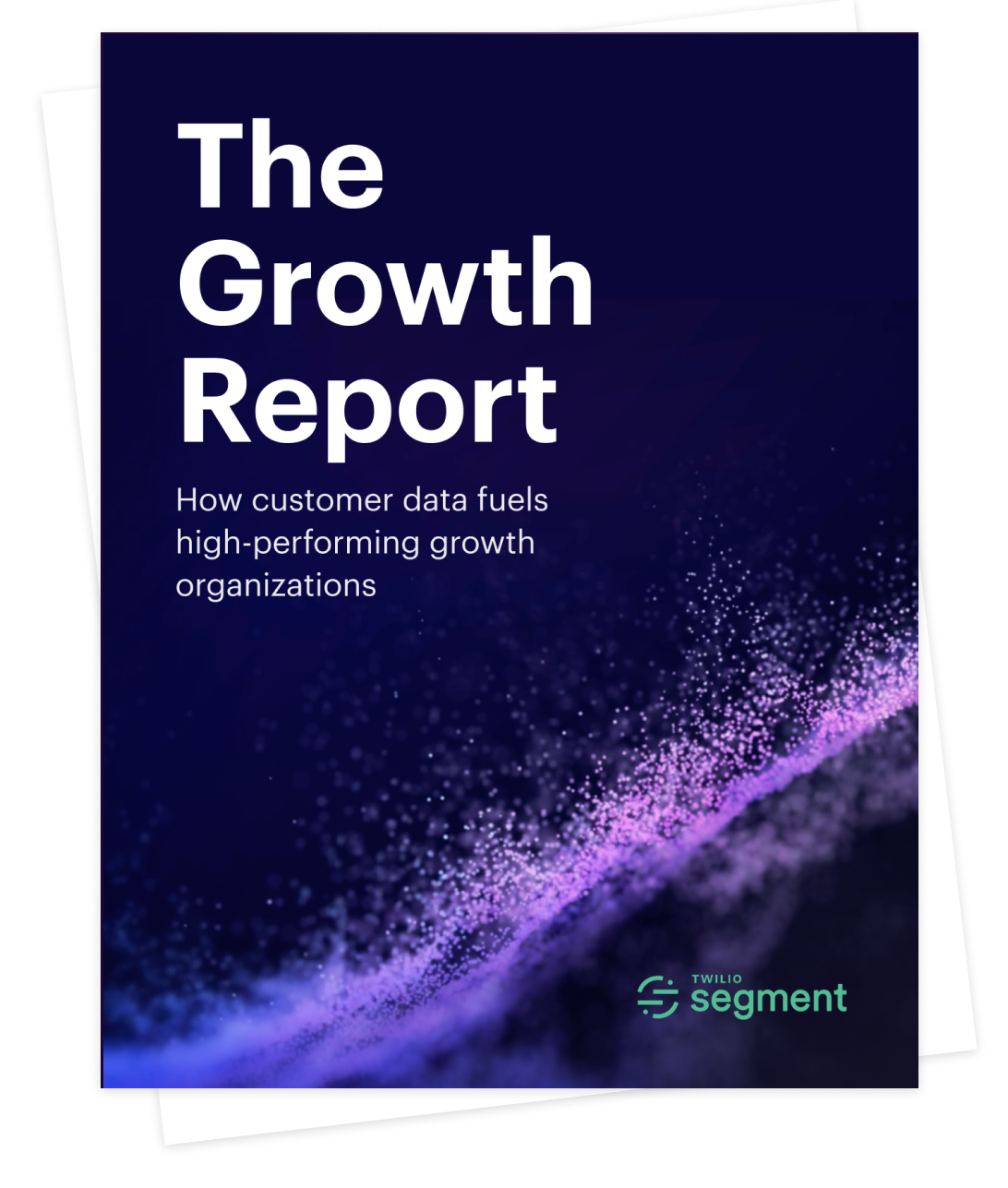Product-Led Growth 101: Serve before you sell
In a product-led growth business, the product handles most of the customer acquisition, activation, and retention. Here's an overview of the fundamentals.
In a product-led growth business, the product handles most of the customer acquisition, activation, and retention. Here's an overview of the fundamentals.
In a recent episode of Growth Masters, Wes Bush, the founder of ProductLed, explained the value of product-led growth (PLG) with a few dramatic examples.
Vendasta reduced its customer acquisition costs from $12,000 to $3,000 per customer. ConvertKit went from zero to one thousand free trial signups per day. Vidyard's freemium product attracted over 100,000 users in less than 12 months.
Such numbers might sound like magic, but they're all the result of teams practicing Product-Led Growth. We've distilled the fundamentals from Wes' talk in this article:
What is Product-Led Growth (PLG)?
How does Product-Led Growth benefit companies?
What are the fundamentals of PLG?
Is Product-Led Growth right for you?
In a product-led growth business, your product handles most of the customer acquisition, activation, and retention. This approach contrasts with organizations that depend on sales reps, advertising, or content to generate leads and users for their offerings.
PLG companies typically rely on a freemium or free trial model, meaning people can try out the product—or parts of it—for free. This business model makes it easy for prospects to "try before they buy" and for companies to convince them to do so without salespeople.
As Wes explains: “If you've used Slack or even Dropbox… you probably didn't read a lengthy white paper or a guide on the benefits of strong internal communication or cloud-based file sharing. You just signed up for the product and were able to see the value of the product by… using it.”

Many PLG companies turn the traditional acquisition process on its head, waiting until after you’ve used the product to call you. For example, agile meeting tool Parabol only involves sales reps once your account hits a specific team size and usage level.
Freemium isn't the same as PLG. You could offer parts of your product for free and still rely heavily on sales or advertising—instead of your product—to drive growth. However, since PLG companies rely on their products to attract prospects and generate customer insights, most work with a freemium or free trial model to ensure a large user pool.
PLG companies don’t shun other methods like advertising or sales but only use them when they serve as gas to ignite the acquisition fire—the product.
Letting your product drive growth doesn't mean the product team runs the company or that you fire your sales team. Instead, all departments turn to the product as the first place to generate growth and help reach other business objectives.
A marketing team, for example, might ask: "How can we use the product as the number-one lead magnet for our business?" A sales team: "How can our product data qualify our prospects for us?"
PLG lets you build a business growth engine that's more effective and less expensive than other growth, marketing, and sales techniques. You'll save money on customer acquisition while capturing more leads and increasing return on capital.
Companies that adopt a PLG approach reduce their customer acquisition costs because the product experience drives the buying process. As a result, more revenue doesn't require adding more headcount or increasing advertising spend.
Instead, the product sells and markets itself. Users can try it out for free, and they often tell others about it, for example, by inviting a co-worker or friend through—you guessed it—a feature within the product.
Wes gives the example of Zoom, which could never have scaled from 10 million to 200 million daily meeting participants in just three months using a traditional sales approach. He estimates that would have required 131,944 salespeople to give every prospect a product demo and sign them up.

Wes explains that PLG speeds up your sales cycle since, as your customers experience your freemium offering, "they are convincing themselves why they need your product." This is due to the endowment effect, a psychological principle in which people tend to overvalue things they feel ownership over.
That process is much faster and more convincing—assuming your product is great!—than relying on sales. A salesperson needs to build trust to convince you to try out or buy a product you're not sure you need. But that need is eliminated when customers can see the value of the product for themselves, right from the start.
You can also generate more leads, because you can capture people earlier in the funnel—prospects who'd love to test your product but wouldn't be ready to request a demo from a salesperson. So, while your rivals are onboarding new sales reps, you are onboarding new customers.
According to Wes, it's not uncommon to see a 20% to 30% increase in signups when businesses switch to a PLG, freemium-driven model. ConvertKit had no free offering before 2020 but now gets 800 to 1,000 free account signups every day, of which they convert between 4.5% and 5% to paying users.
A PLG company lets the product handle as many business activities as possible, not just customer acquisition. This way of thinking helps you make more money with fewer resources. You can invest such savings into R&D, recruiting the best talent, or profit-sharing to improve employee retention.
Nathan Barry, Founder & CEO of ConvertKit:
"I want to build the largest company I can with the fewest number of people."
You can apply PLG thinking across your organization, for example, by:
Embedding customer support in the product through a self-serve knowledge base
Automating financial operations by giving customers access to their invoices and payment methods through the product
Conducting user research within the product itself or through a semi-automated process, as we did here at Segment.
PLG combines timeless business practices—like “try before you buy”—with modern product management principles that aim to continuously improve the user experience through product analytics and user research.
It's hard—if not impossible—for your product to drive growth when it's locked up behind a paywall or sales team. A strong brand and social proof aren't sufficient anymore to build trust with the modern buyer. People want to try and experience value before making a purchase.
In that sense, PLG is bringing to the digital space what's completely normal in other industries. After all, you wouldn't think of buying cologne, a car, or shoes before trying them.
This change to a self-serve model with a freemium or free trial component isn't limited to the direct-to-consumer space anymore. Research from Gainsight, a customer success platform, notes that "enterprise buyers also expect to try and evaluate software in an easy frictionless way." Plus, Forrester found that three out of every four B2B buyers would rather self-educate than learn from a sales representative about a product.
Time-to-value expresses how long it takes for your customer to experience your product's value after signing up. Unsurprisingly, if this takes too long, users leave and never return—which is precisely what 40-60% of first-time users do, according to Intercom.

When you rely on your product to drive growth, this metric is especially critical. Your product experience—not a salesperson—needs to convince someone to stick around and, eventually, buy. The shorter your product's time-to-value, the more chance they will do so.
Even seemingly insignificant details can make a difference. Wes gives the example of Snappa, a design app for people who aren't designers. They dropped the requirement for users to confirm their email address—a detour from time-to-value that forced people to go from Snappa to their email inbox. This small change resulted in 27% of the users they'd previously written off—because they didn't confirm their emails—trying out the product. Those people now experienced Snappa's value, leading to a 20% revenue increase.
Even when you've shortened time-to-value and learned to serve your users before you sell to them, you need to keep a close eye on people who don't convert. Doing so can reveal critical insights for unlocking new business opportunities.
Nathan from ConvertKit gives an excellent example. They provide an email marketing tool, but extensive user research revealed that many potential customers didn't have a website or know how to set one up. Having at least a landing page is critical to collect subscribers for email marketing. A lack of one blocked many people from experiencing ConvertKit's value and becoming customers.
"People were asking us, 'Should I use WordPress, should I,' all those questions... Seeing all that data, it made us realize that we should build a landing pages product ... It was really that onboarding data that drove those decisions."
Product-Led Growth is the right approach for many companies. Customers across industries now expect a seamless, personalized, self-serve product experience before buying—or being sold to. PLG is the most effective way to deliver on those expectations.
Customer acquisition costs are also sky-high in competitive sectors, making PLG the only sustainable route in mature markets.
PLG isn’t right for everyone. It can't reach and sell to decision-makers who prefer dealing with a representative or sales team—like certain government institutions or high-level executives. Also, products that require significant, hands-on support during onboarding and setup can't rely on PLG to educate new users.
If your business is built on a paid model, proceed with caution when adding a free tier to your offering. Before doing so, be sure to calculate and test extensively how many of your existing paying users will likely downgrade to the free plan. Rob Walling, the former CEO of Drip, another email tool, sums up the risk: "Freemium is like a Samurai sword: unless you’re a master at using it, you can cut your arm off."
Find out if Product-Led Growth fits your company by taking the PLG maturity quiz at ProductLed.com.

Get key insights about how to build and operate your growth team for optimal performance from companies like HubSpot, Shopify, and Lyft.